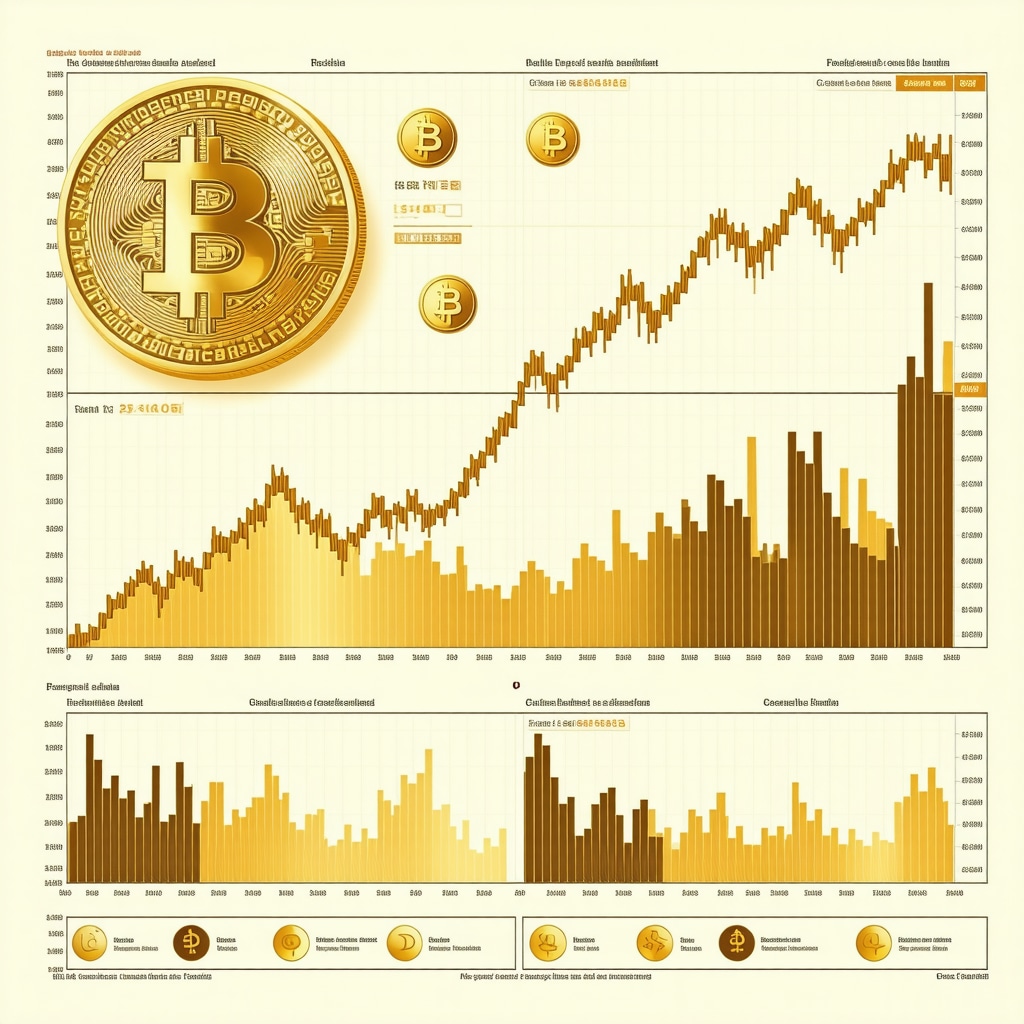Unlocking the Investment Puzzle: Why Gold vs Stocks Comparison Matters
In the complex world of wealth building, choosing between gold and stocks isn’t just about picking one asset over another—it’s about understanding how these differing investment vehicles interact within your portfolio to optimize returns and manage risk. This comparison transcends mere price tracking; it dives deep into the fundamental roles gold and stocks play as economic barometers and portfolio stabilizers.
Gold’s Timeless Role as a Safe Haven Amid Market Turbulence
Gold has been revered for millennia as a store of value, particularly shining during periods of market volatility or economic uncertainty. Unlike stocks, which can be highly sensitive to corporate earnings and market sentiment, gold often acts as a hedge against inflation and currency devaluation. For instance, during the 2008 financial crisis, while stock markets plummeted, gold prices surged, preserving investor wealth in an otherwise hostile environment.
Stocks: Engines of Growth and Innovation
Stocks represent ownership in companies driving economic growth and innovation. They offer the potential for substantial capital appreciation and dividends, but with increased volatility. Over long horizons, equities generally outperform most asset classes, including gold. However, this growth potential comes with exposure to market cycles, geopolitical events, and corporate performance risks.
How Does the Gold vs Stocks Comparison Influence Your Portfolio’s Resilience?
The strategic juxtaposition of gold and stocks within an investment portfolio is essential for balancing growth and protection. Gold’s low correlation with equities means it can offset stock market downturns, smoothing portfolio volatility. An investor allocating a portion of assets to gold ETFs or physical bullion can mitigate risks associated with equity market crashes, thereby enhancing long-term financial stability.
Incorporating Gold and Stocks: A Dynamic Approach to Diversification
Experts advocate for a calibrated mix of gold and stocks tailored to individual risk tolerance and investment horizon. For example, younger investors might favor higher stock exposure for growth, gradually incorporating more gold as they approach retirement to preserve capital. Utilizing gold ETFs, mutual funds, or even gold stocks can provide diversified exposure without sacrificing liquidity.
For a comprehensive exploration of gold investment options and strategies, consider this resource on types of gold investments.
Practical Wisdom: Real-World Scenarios Highlighting the Comparison
Imagine an investor in early 2020 facing the COVID-19 pandemic-induced market shock. Stocks plunged dramatically, but gold prices climbed, cushioning portfolio losses. This practical example underscores why understanding the interplay between gold and stocks is vital for informed decision-making and risk management.
Integrating insights from authoritative financial research, such as the World Gold Council’s analysis on gold’s portfolio role, reinforces the strategic importance of this comparison (World Gold Council portfolio diversification).
Have experiences or questions about balancing gold and stocks in your investments? Share your thoughts in the comments below or discover smart gold strategies to enhance your portfolio today.
Strategic Allocation: Tailoring Gold and Stocks Mix for Market Conditions
Beyond the foundational understanding of gold and stocks, an expert investor recognizes the importance of adapting asset allocation in response to evolving macroeconomic and geopolitical landscapes. For instance, during periods of rising inflation expectations, increasing gold exposure can serve as a robust inflation hedge, while equities might suffer due to higher input costs and tightening monetary policies. Conversely, in a strong economic expansion phase, overweighting stocks can capitalize on corporate earnings growth and innovation-driven market rallies.
This dynamic approach requires continuous market monitoring and flexibility to rebalance portfolios accordingly. Utilizing tools like gold market trend analysis and economic indicators empowers investors to make informed allocation shifts that optimize risk-adjusted returns.
Gold Stocks vs Physical Gold: Which Offers Superior Portfolio Benefits?
While physical gold provides direct exposure to the metal’s intrinsic value and is favored for its tangibility and liquidity, gold mining stocks present distinct advantages through leveraged exposure to gold price movements and potential dividends from profitable operations. However, mining stocks carry additional risks tied to operational, geopolitical, and management factors.
Experts often recommend incorporating both forms to achieve diversified exposure. Gold ETFs and mutual funds also serve as accessible vehicles combining physical gold and gold stock holdings, providing liquidity and ease of management. For a deep dive into these options, visit gold ETFs versus stocks comparison.
What Are the Key Indicators for Timing Gold and Stock Investment Decisions?
Timing investments effectively in gold and stocks involves a nuanced analysis of multiple indicators. For gold, monitoring real interest rates, central bank gold purchasing trends, and geopolitical tensions provides critical cues. Stocks require attention to earnings forecasts, economic growth rates, and market sentiment.
Additionally, tracking correlation changes between gold and equities can signal shifts in market dynamics, guiding tactical adjustments. For instance, a rising negative correlation might encourage increasing gold allocation to hedge equity risk.
Resources such as the World Gold Council provide authoritative research on these indicators, enhancing investor decision-making frameworks.
Leveraging Gold ETFs and Mutual Funds for Tactical Flexibility
Gold ETFs and mutual funds have transformed access to gold investments by offering liquidity, cost efficiency, and diversification. They allow investors to swiftly adjust exposure without the complexities of physical storage or stock-picking risks. Moreover, many funds blend physical gold holdings with gold equities, optimizing risk-return profiles.
For investors seeking to combine growth potential with stability, understanding the nuances between these funds is essential. Explore our detailed comparison in gold ETFs versus mutual funds to select the best fit aligned with your investment objectives.
Your insights matter: How have you navigated the balance between gold and stocks in your portfolio during volatile markets? Share your experiences in the comments below or discover expert gold trading techniques to refine your strategy further.
Macro-Economic Signals and Their Impact on Gold and Stock Portfolio Strategies
Understanding the intricate relationship between macroeconomic indicators and asset performance is pivotal for crafting a resilient investment portfolio. Inflation rates, central bank policies, and geopolitical developments serve as leading signals influencing both gold and stock markets. For instance, an environment with rising inflation expectations typically boosts gold’s appeal as an inflation hedge, whereas equities might experience pressure due to margin compression and increased borrowing costs.
Moreover, the interplay between monetary tightening cycles and fiscal stimulus shapes market liquidity dynamics. Investors who adeptly monitor these signals can tactically adjust their gold and stock allocations to maximize risk-adjusted returns. Incorporating advanced analytical tools such as econometric models and real-time data feeds enhances the precision of these adjustments.
How Can Sophisticated Investors Utilize Correlation Dynamics Between Gold and Stocks to Enhance Portfolio Resilience?
The correlation coefficient between gold and stocks is not static; it fluctuates based on market conditions and investor sentiment. Sophisticated investors track these shifts meticulously, leveraging periods of negative or low correlation as opportunities to rebalance portfolios for optimal diversification benefits. For example, during systemic crises, gold’s negative correlation with equities strengthens, offering a robust hedge, whereas in bullish markets, this correlation may weaken, signaling a tactical shift toward equities for growth.
By employing statistical tools like rolling correlation analysis and regime-switching models, investors gain nuanced insights into these dynamics. This advanced understanding facilitates proactive decision-making, enabling portfolio adjustments before broad market movements manifest.
Integrating Alternative Gold Instruments: Beyond Physical and Mining Stocks
Beyond traditional physical gold and mining equities, alternative instruments such as gold-linked derivatives, structured products, and blockchain-based gold tokens are gaining prominence among sophisticated investors. These vehicles offer varying degrees of leverage, liquidity, and counterparty risk, expanding the toolkit for nuanced portfolio construction.
For instance, gold futures and options enable tactical exposure with defined risk parameters, while gold-backed digital assets provide innovative liquidity solutions in decentralized finance ecosystems. However, these instruments demand comprehensive due diligence and risk management frameworks due to their complexity and regulatory nuances.
Risk Management Techniques in Gold and Stock Portfolio Allocation
Effective risk management transcends simple diversification; it encompasses volatility targeting, drawdown control, and scenario analysis. Employing techniques such as Value at Risk (VaR) and Conditional VaR tailored to gold-stock portfolios helps quantify potential losses under adverse conditions.
Additionally, stress testing portfolios against historical crises and hypothetical shocks reveals vulnerabilities and informs strategic hedging decisions. Dynamic rebalancing protocols, incorporating volatility parity or risk parity approaches, optimize capital allocation between gold and stocks by aligning risk contributions rather than nominal allocations.
Industry leaders recommend integrating these methodologies with qualitative insights to capture market nuances that quantitative models might overlook (CFA Institute on Portfolio Diversification and Risk Management).
What Are the Emerging Trends in Gold and Stock Investment Strategies Amid Rapid Technological and Geopolitical Changes?
The evolving technological landscape, including advancements in artificial intelligence and blockchain, alongside shifting geopolitical tensions, is reshaping gold and stock investment paradigms. Investors increasingly adopt algorithmic trading strategies and machine learning models to detect market anomalies and optimize timing decisions between gold and equities.
Simultaneously, geopolitical risks such as trade disputes, resource nationalism, and currency volatility elevate gold’s strategic value as a geopolitical hedge. Incorporating scenario planning and geopolitical risk analytics becomes essential for forward-looking portfolio management.
Staying abreast of these trends empowers investors to maintain strategic agility and capitalize on emerging opportunities.
Engage with us: Are you harnessing advanced data analytics or alternative gold instruments in your portfolio? Join the conversation below or explore expert-level strategies to elevate your investment approach.

Decoding Correlation Shifts: A Sophisticated Lens on Gold and Stock Interactions
Understanding the dynamic interplay between gold and stock correlations is paramount for constructing resilient portfolios. Unlike static correlations, the relationship between these asset classes oscillates with macroeconomic regimes, market sentiment, and geopolitical events. Savvy investors leverage rolling correlation analyses and regime-switching statistical models to anticipate these fluctuations, enabling preemptive portfolio rebalancing that captures diversification benefits when most needed.
Incorporating Cutting-Edge Analytical Tools for Portfolio Optimization
Modern portfolio management transcends traditional heuristics by integrating econometric models, machine learning algorithms, and real-time data feeds. These advanced tools provide granular insights into inflation trends, interest rate trajectories, and fiscal policy impacts, which are critical drivers for both gold and equities. Harnessing such analytics empowers investors to fine-tune asset allocations dynamically, thereby optimizing risk-adjusted returns amid evolving market landscapes.
How Can Integration of Blockchain-Based Gold Assets Revolutionize Portfolio Diversification?
The emergence of blockchain-based gold tokens offers a transformative avenue for portfolio diversification, blending the tangibility of gold with the liquidity and programmability of digital assets. These tokens provide fractional ownership, instantaneous settlement, and enhanced transparency, mitigating traditional barriers such as storage costs and illiquidity. However, incorporating these instruments necessitates rigorous due diligence concerning regulatory compliance, counterparty risk, and smart contract vulnerabilities.
For a comprehensive understanding of these innovations, the Investopedia guide on blockchain gold tokens offers an authoritative resource.
Advancing Risk Management: Volatility Targeting and Scenario Analysis in Depth
Progressive risk management frameworks integrate volatility targeting and scenario analysis tailored specifically for gold-stock portfolios. By calibrating allocations to maintain target portfolio volatility, investors can achieve more consistent risk exposure, mitigating drawdowns during systemic shocks. Additionally, stress-testing portfolios against historical crises and hypothetical geopolitical scenarios reveals latent vulnerabilities, informing tactical hedging strategies that preserve capital without sacrificing growth potential.
Expert Insights on Adaptive Allocation Amid Geopolitical Flux
Geopolitical developments—ranging from trade wars to resource nationalism—exert profound influences on gold and stock valuations. Seasoned investors employ geopolitical risk analytics to quantify these impacts, adjusting allocations proactively. For example, escalating tensions often elevate gold’s safe-haven status, while equities may face headwinds. Incorporating scenario planning frameworks enables anticipation of such shifts, fostering portfolio agility and resilience.
Unlock your investment potential: Delve deeper into these advanced strategies and tailor your gold-stock portfolio with precision by exploring our expert resources. Elevate your investment approach today and share your insights with our community to refine collective expertise.

Frequently Asked Questions (FAQ)
What makes gold a reliable hedge against inflation compared to stocks?
Gold’s intrinsic value and scarcity underpin its historic role as an inflation hedge, preserving purchasing power when fiat currencies weaken. In contrast, stocks can suffer during inflationary periods due to rising input costs and squeezed profit margins, although some sectors may outperform. Gold’s low correlation with equities further enhances its diversification benefit in inflationary environments.
How should investors determine the right allocation between gold and stocks?
Optimal allocation depends on individual risk tolerance, investment horizon, and market conditions. Younger investors typically favor higher stock exposure for growth potential, gradually increasing gold holdings as they approach capital preservation phases. Dynamic rebalancing based on macroeconomic indicators and correlation shifts can further refine allocation for risk-adjusted returns.
Are gold mining stocks a better alternative to physical gold?
Gold mining stocks offer leveraged exposure to gold price movements and potential dividends but carry additional operational, geopolitical, and management risks. Physical gold provides direct ownership with less counterparty risk and is preferred for safe-haven purposes. Combining both, or using ETFs blending these exposures, can enhance diversification.
How do macroeconomic indicators influence gold and stock investment strategies?
Inflation rates, interest rate trends, central bank policies, and geopolitical developments critically impact gold and stock valuations. Rising inflation and geopolitical tensions typically boost gold’s appeal, while strong economic growth favors equities. Monitoring these signals allows investors to tactically adjust allocations to optimize performance.
What role do correlation dynamics between gold and stocks play in portfolio management?
The correlation between gold and stocks is dynamic, often turning negative during crises, which enhances diversification benefits. Sophisticated investors track rolling correlations and employ statistical models to anticipate regime shifts, enabling proactive rebalancing that mitigates risk and stabilizes returns.
Can blockchain-based gold tokens transform traditional gold investing?
Blockchain gold tokens offer fractional ownership, enhanced liquidity, and transparency, reducing barriers like storage costs and illiquidity inherent in physical gold. However, they introduce regulatory and counterparty risks requiring thorough due diligence. These digital assets represent a promising innovation expanding portfolio diversification options.
How do gold ETFs and mutual funds differ, and which is better?
Gold ETFs generally provide more liquidity and lower expense ratios, often tracking physical gold prices closely. Mutual funds may combine gold equities with physical gold exposure and can offer active management advantages. The choice depends on investors’ objectives, cost sensitivity, and preference for active versus passive strategies.
What advanced risk management techniques improve gold and stock portfolio resilience?
Techniques such as volatility targeting, Value at Risk (VaR), Conditional VaR, and scenario analysis help quantify and control downside risk. Stress testing against historical market crashes and geopolitical shocks informs tactical hedging. Dynamic rebalancing strategies like risk parity align risk contributions to optimize portfolio stability.
How are technological advancements influencing gold and stock investment strategies?
Artificial intelligence, machine learning, and algorithmic trading enable sophisticated market anomaly detection and timing optimization. These technologies facilitate real-time data analysis for dynamic allocation adjustments. Additionally, blockchain innovations introduce new gold investment vehicles, enhancing liquidity and portfolio flexibility.
How can geopolitical risks be integrated into portfolio allocation decisions?
Geopolitical tensions often increase demand for gold as a safe haven, while equities may face volatility or downturns. Incorporating geopolitical risk analytics and scenario planning enables investors to anticipate shifts and adjust allocations proactively, thereby enhancing portfolio resilience amid uncertain global landscapes.
Trusted External Sources
- World Gold Council: Provides comprehensive research on gold’s role in portfolio diversification, macroeconomic impacts, and market trends, underpinning expert investment strategies.
- CFA Institute: Offers authoritative insights into portfolio diversification, risk management methodologies, and advanced quantitative techniques crucial for balanced gold-stock allocation.
- Investopedia’s Blockchain Gold Token Guide: Delivers clear explanations and analysis of emerging blockchain-based gold instruments, aiding understanding of innovative diversification tools.
- International Monetary Fund (IMF): Supplies macroeconomic data and policy analyses that inform the economic context influencing gold and stock market dynamics.
- Financial Times: Features in-depth coverage of geopolitical developments and market reactions, essential for integrating geopolitical risk into investment decisions.
Conclusion
Mastering the gold vs stocks comparison is fundamental for constructing robust investment portfolios that balance growth and protection. Gold’s enduring safe-haven status, combined with stocks’ growth potential, creates a synergistic dynamic that mitigates volatility and enhances long-term wealth preservation. Embracing advanced analytics, dynamic allocation strategies, and emerging instruments like blockchain gold tokens empowers investors to navigate complex market environments with precision and agility. By continuously monitoring macroeconomic signals, correlation shifts, and geopolitical risks, sophisticated investors can tailor their portfolios to optimize risk-adjusted returns effectively. We invite you to apply these insights, share your experiences, and explore further expert content to elevate your investment strategy in an ever-evolving financial landscape.










